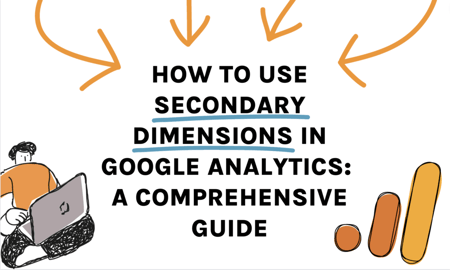Maximizing Search Engine Optimization Efficiency with Secondary Dimensions: Ideal Practices
Wiki Article
Optimize Your Reporting Precision With Additional Measurements
In the realm of information analysis, the quest for accuracy and deepness is a perpetual pursuit. Secondary dimensions offer a portal to augmenting reporting precision by offering a complex lens through which to view data. Think of the power of unraveling complex layers of details that exist past the surface metrics, offering a richer tapestry of insights waiting to be explored. As we begin on this journey of leveraging second dimensions, the landscape of reporting accuracy bids with guarantees of enhanced clearness and tactical decision-making.Value of Additional Dimensions
Using second measurements is essential for enhancing the depth and granularity of reporting understandings in information evaluation. Secondary measurements enable analysts to section and filter information based on particular criteria, providing a much more customized and targeted evaluation.Moreover, secondary measurements assist in determining relationships and connections that might not be right away obvious when assessing data with just main dimensions. This much deeper degree of understanding can result in even more enlightened decision-making and calculated planning within a company. By leveraging secondary dimensions efficiently, organizations can uncover surprise possibilities, pinpoint locations for renovation, and enhance their overall efficiency.
Implementing Second Dimensions
To include second dimensions properly right into data analysis procedures, services should adopt an organized approach that straightens with their coverage purposes and logical goals. Implementing additional dimensions involves choosing the appropriate dimensions that offer deeper insights right into primary information metrics. It is crucial to identify which secondary dimensions will certainly improve the understanding of the primary information being examined. Services must take into consideration aspects such as the type of data being collected, the details metrics they wish to evaluate, and the crucial performance signs (KPIs) they are concentrated on enhancing.Additionally, businesses need to ensure that the selected additional dimensions relate to the primary information and supply meaningful context without creating info overload. Carrying out secondary dimensions additionally needs specifying clear analytical questions that the additional measurements will certainly aid answer. By structuring the implementation process around these considerations, businesses can maximize the value originated from second measurements and enhance the precision and deepness of their coverage.
Studying Information With Second Dimensions

One trick element of evaluating data with secondary dimensions is to make sure that the chosen measurements align with your details analytical goals. Picking the right secondary measurements can supply context and nuance to your key information metrics, enabling you to draw more accurate conclusions and make educated choices based on the insights acquired.
Moreover, leveraging secondary measurements effectively can assist in determining outliers, understanding the influence of different variables on your vital performance indications, and obtaining a detailed view of your information landscape. By diving into information with additional measurements, you can improve the deepness and top quality of your analysis, leading to more durable coverage and workable outcomes.

Enhancing Insights Via Additional Measurements
Checking out go right here information through secondary measurements not only strengthens analysis but also amplifies the potential for uncovering valuable insights that can dramatically improve reporting accuracy. By adding second measurements to your records, you can get an extra thorough understanding of the relationships between various information points. When evaluating data with key dimensions alone., this enhanced point of view allows you to determine patterns, trends, and connections that may have been forgotten.
In significance, leveraging additional dimensions encourages you to remove richer insights from your data, allowing you to make even more educated decisions and enhance your reporting precision.
Best Practices for Additional Measurements
Making use of second measurements effectively calls for mindful factor to consider of crucial strategies to boost data evaluation and reporting accuracy. When carrying out second measurements, it is essential to straighten them with imp source your key metrics to acquire purposeful understandings.Another crucial technique is to trying out various combinations of second and main dimensions to uncover unique correlations and patterns within your data. This iterative technique can expose important insights that might have been ignored otherwise. Additionally, it is essential to regularly evaluate and refine your secondary measurement choices to guarantee they continue to be relevant and lined up with your advancing reporting demands.
In addition, recording the reasoning behind your selection of second dimensions can provide context for future evaluation and facilitate cooperation within your team. By adhering to these finest practices, you can make the most of the performance of second dimensions in boosting your coverage accuracy and driving educated decision-making.
Final Thought
Integrating second measurements in information evaluation is essential for making the most of reporting precision and have a peek at these guys getting much deeper understandings right into performance trends. Implementing best practices for secondary dimensions enhances the deepness of evaluation and boosts the importance of reporting end results.In addition, second measurements aid in identifying correlations and relationships that might not be instantly evident when assessing information with only main dimensions. Executing secondary dimensions entails picking the ideal measurements that offer much deeper understandings right into main data metrics. Implementing second measurements likewise requires defining clear logical concerns that the extra measurements will certainly assist answer.When analyzing information with additional dimensions, it is crucial to focus on extracting beneficial insights that complement key information metrics. By integrating secondary measurements right into your analysis, you can reveal patterns, patterns, and relationships that might not be evident when looking at the data from a key dimension alone.
Report this wiki page